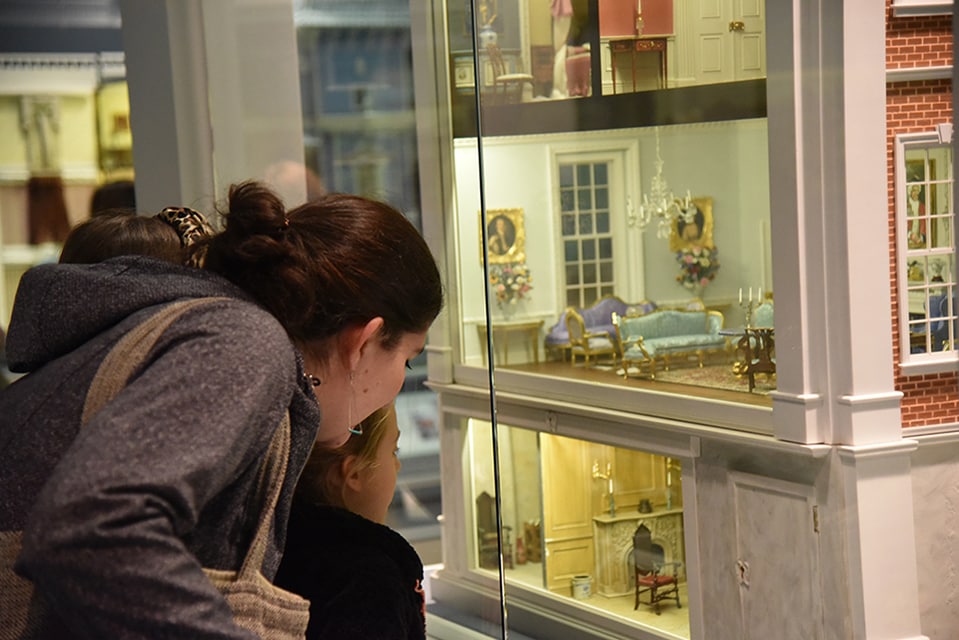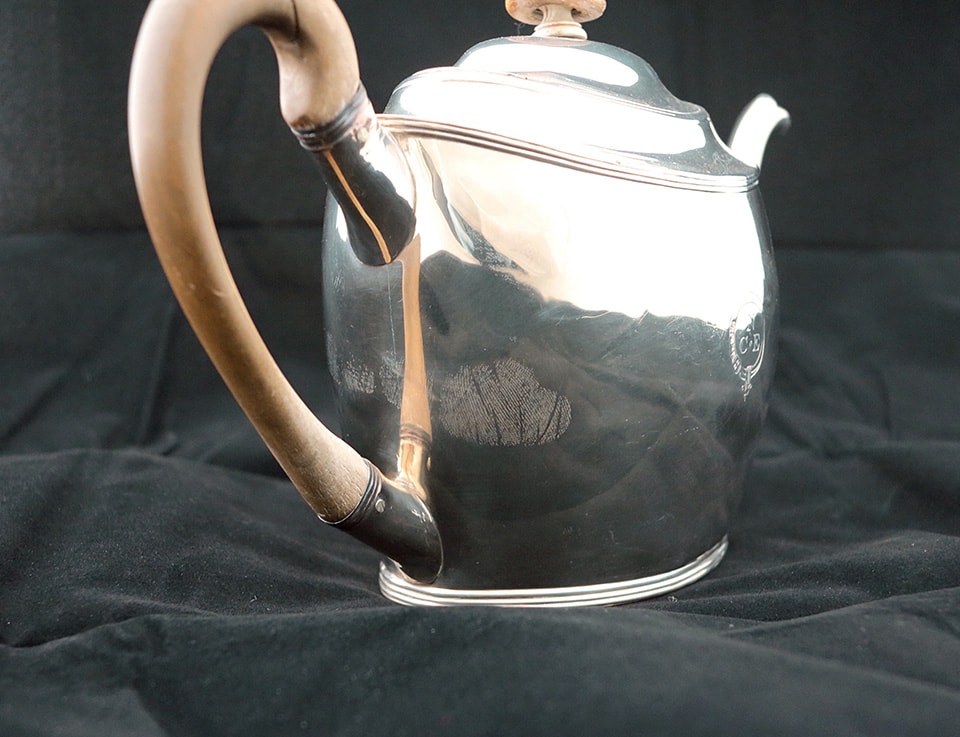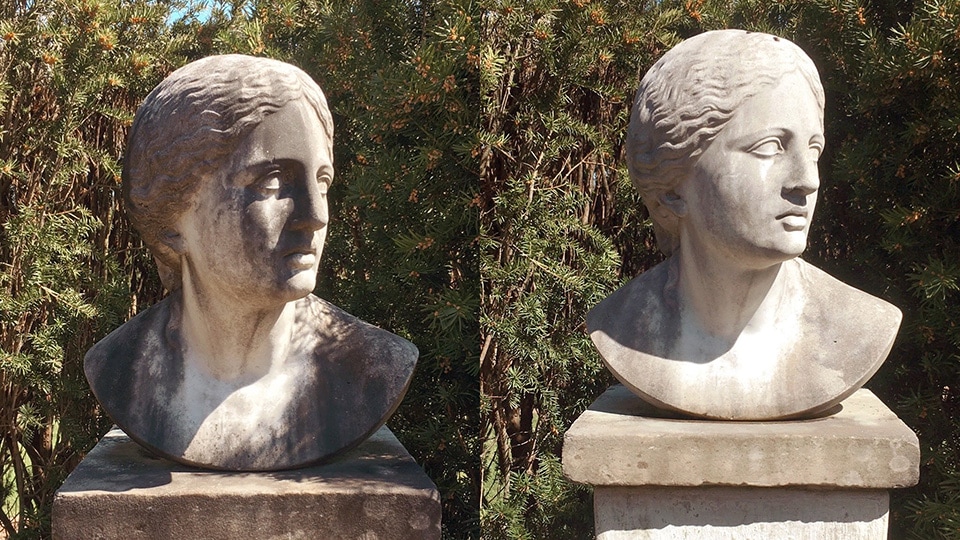One of my first thoughts when visiting a museum is either “Oh, that’s so clean!” or “Ew, they haven’t dusted in ages.”
But I am jaded. I am a Collections Manager and it is my job to consider the challenges faced by objects on display and what can go wrong in any given situation. For 15 years the collections team at the MSV has maintained the highest standards of collections care so that these challenges are minimal. Here are 15 cases of collections care that still crop up and keep life interesting:
Miniatures—You love to see them while they fill the collections manager with unease. Did you know that the Glen Burnie miniature is filled with over 1500 objects? Each of those items must be removed from the house, dusted, and replaced annually. Thankfully, I have small hands and do not mind a challenge.
1830s and 1930s Kitchens—We have two fully stocked kitchens in the Shenandoah Valley Gallery. They are furnished with props, loans, and objects from our permanent collection. We dust them each year but maneuvering between the set pieces is a delicate dance and planting a ladder to reach the high shelves is a test of balance and determination.
Sconces—Important for lighting and visually pleasing. Impossible to clean. These delicately carved and gilded pieces are just waiting to fall apart with every approach of a dust cloth or brush.
Fort Loudoun Library Books—In 2019 we received hundreds of books that once graced the shelves of the Fort Loudoun Seminary. They had been poorly housed, were covered in dirt, and full of animal droppings. Vacuuming between every page of every book was not realistic but we had to make them safe for handling and storage in our main collections space. We froze each book to remove the threat of live pests and vacuumed the inside and outside of every cover. It took approximately 6 months and countless pairs of gloves.
Paintings in Storage—Paintings in our storage space are hung on wall racks that extend from the floor to the ceiling. Periodically they must be dusted and checked for condition issues. Because of their height we roll in a lift. Using a soft touch on high quality art while locked in a lift 16 feet in the air is just a little stressful; thankfully, I am only moderately afraid of heights.
Painted Furniture—There is a food safe (aka pie safe) on display in the Shenandoah Valley Gallery. It is painted green and its punched tin panels feature a profile of George Washington. It’s a beautiful piece. It also has a bumpy surface caused either by particles in the paint or unfinished wood. This means that a dust cloth snags on the surface which can pull off paint or leave fibers behind. Brushing the piece removes surface dust and dirt but it never quite gets it all.
Printing Press—Some objects are meant to be dirty. The Henkel Printing Press, which dates to 1810, was a functional tool that literally pressed ink onto paper. The stains of that use are just as important as the piece itself. We should not remove them but whenever the press is dusted a small bit of ink comes off. Finding a balance between old dirt and new dirt is one of my most frequent challenges.
Apple Ladder—One of our upcoming collections care projects involves a 20ft apple ladder that belonged to the Wood Glass family. Like the Henkel press it was a functional tool. It was well used and lived its life in a barn before coming to the museum. In order to make it safe to bring into storage we need to wipe it down and encapsulate it in plastic to kill any active pest infestations. But remember, its enormous.
Silver—The shine, the glamour, the terror! Cleaning silver scares me. Silver pieces are very susceptible to scratching and marks from fingerprints. Every time they are handled, there is a high risk they will be marked in some way. Polishing, a necessary part of silver maintenance, can further wear away the piece and remove valuable patina.
Tea Kettle—The MSV recently acquired a tea kettle made by John Henry Blondel in Martinsburg, VA (now WV) ca. 1825. As with many pieces that come into museum collections, the kettle needed a little care. The least abrasive methods of cleaning, like dusting, were insufficient so the next level was to introduce Renaissance Wax to the surface. Applying a chemical to a historic surface should always be done with care and foreknowledge of how it can interact with varied materials. In this case the kettle retained its look of age and use but lost its dusty and dulled coating.
Rock House by Robert Cross—Robert Cross’s sculpture, Rock House, is made with aquarium rocks. Caring for that is not something I learned in school. The most effective method of cleaning the piece in-house is to brush the dust off into a vacuum.
Garden Statuary—Our garden statuary lives outside year-round. The sculptures face rain, wind, snow, ice, and interactions with visitors and staff. This is their reality. They will get dirty and they will break. Despite my desire to put everything behind glass and insist on “no touching,” I accept that outdoor art will be loved and will deteriorate. But, as a team, we are able to prolong its life with water and elbow grease.
Curtains—Cleaning curtains shouldn’t be hard. But when you need to haul a vacuum up a ladder to reach the dead stink bug on the very top valance, it is challenging.
White T’ang Dynasty Horse—The oldest piece in the collection is a sculpture of a white horse that dates to the T’ang Dynasy (618-907 CE). We can brush the sculpture off, but care beyond that point is past our expertise. There is no shame in admitting the need to call a conservator for more specialized care.
The Unknown—Every day brings new treasures and challenges. As you’ve seen throughout this list, cleaning and caring for a collection is never one size fits all. Each piece requires careful consideration and an individualized maintenance plan. I can’t wait to see what the next 15 years bring!



